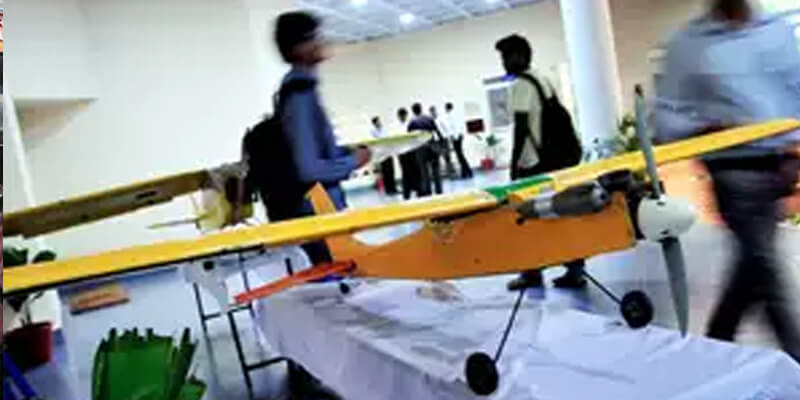If you look at some of the more prominent e-commerce and marketplace ventures of today, be it Flipkart, Snapdeal, Zomato, Quikr, Ola, or Housing, you will find that many have founders who did engineering degrees at IIT Delhi or IIT Mumbai.
But the future of the more technology focused startups – the kind that institutions like Stanford produce in droves – may actually be IIT Madras, and the phenomenal success of some companies like Zoho may be early evidence of that. This has to do with the culture of technology research and industry-academia interaction that the institution has fostered for years, and which has touched a new high with a massive research facility that was launched five years ago.
The IIT Madras Research Park was an idea conceptualized by Ashok Jhunjhunwala, professor at the electrical engineering department of IIT-M, and M S Ananth, the then dean of academic courses and later the director of the institute, to create a bridge between innovations created in the classroom and industry. It is spread across 1.2 million sq ft, houses almost 100 entities – research companies, innovation arms of large corporates, startups and incubators – and has already facilitated of over 60 patents.
“We realized that the rewards of R&D are significantly higher if we enable R&D personnel from industry to work jointly with our faculty and students on new ideas,” says Bhaskar Ramamurthi, director of IIT Madras and a member of the board at the Research Park.
Innovative startups
The success of the ecosystem can be seen in the quality and utility of the innovations produced by its residents. Take Vortex Engineering, which is working towards financial inclusion using disruptive ATM technology. The company claims many firsts – first biometric ATMs for MNREGA, first ATMs to work without AC, and first commercially viable solar ATMs. Narayanakumar R, the chief development officer of Vortex, is all praise for the ecosystem. “Our research activities here have resulted in almost nine patents for the cash technology used in our ATMs,” he says.
Ather Energy is building a smart electric scooter at the Park. Swayambhu Biologics is a biotech firm that uses a patented microbial composting process that results in creation of nutrient-rich biomanure along with the advantage of managing distillery effluents and helping industries achieve zero discharge. IIT-M’s Rural Technology Business Incubator incubated Swayambhu in 2012 and gave them much needed resources, equipment and space at the Research Park. Uniphore, incubated at IIT-M in 2008 and which has filed six patents, has leveraged the institution’s technical expertise to develop Akeira, a virtual assistant like Apple’s Siri. Akeira can be used on any basic phone and its interactive feature keeps farmers informed of advisory messages.
Startups say the presence of R&D divisions of large companies in the same facility enables them to feed into their expertise. TCS has an innovation lab at the Research Park. TCS CTO Ananth Krishnan says the engagement model, the intellectual ambience, and proximity to faculty and students have been a huge positive. “We also get an opportunity to engage and mentor startups doing interesting work,” he says.
The environment, though still in its nascent stages, has striking similarities with that of Stanford, which has long had a unique and powerful relationship with Silicon Valley. A study by Stanford academics Charles Eesley and William Miller three years ago estimated that Stanford alumni and faculty members had founded 39,900 companies since the 1930s, creating 5.4 million jobs and generating annual revenues of $2.7 trillion. Its students and alumni have founded companies like Hewlett-Packard, Intel, Cisco to the more recent Google, LinkedIn, Mozilla,Netflix, Paypal, YouTube, Instagram and Snapchat.
Unique model
IIT-M says it has differentiated the model to suit the Indian context. Director Ramamurthi says the Research Park is perhaps the only one that measures the extent of collaboration with clients through a “credit system”. The system assigns points to clients for different joint activities, ranging from joint patent development to supporting student interns. “Unlike Stanford, where the research ecosystem is for academia-industry linkages, while entrepreneurship development happens across the board, IIT-M’s facility has succeeded in combining research and entrepreneurial elements in one ecosystem,” says Rajan Srikanth, co-president of Keiretsu Forum, an angel investor.
Nagaraja Prakasam, mentor in residence at the N S Raghavan Centre for Entrepreneurial Learning at IIM-Bangalore, says the IIT-M Research Park ecosystem is creating ventures of high technical quality that are solving realworld problems, going beyond internet and mobile consumer ventures. Prakasam is an investor in Uniphore and is in talks with several other ventures for similar relationships.
Shripathi Acharya, managing partner at seed funding venture AngelPrime in Bengaluru, says he would advise startups to have a presence at the Research Park for multiple reasons — professionalism that comes with being present in such a location, the peer learning that happens at the growth stage, and the visibility that it brings to their ventures.
The Research Park could soon get additional muscle with the IIT Alumni Club proposing an ‘IIT Alumni Industry Interaction Centre’ at the facility. The centre hopes to help fledgling ventures in their market penetration stage. “As alumni we want to enable this interaction,” says Suresh Kalpathi, president of the Club and chairman of Kalpathi Investments.
The biggest proof that the IIT-M model is working is perhaps the fact that others are now looking at replicating it. Devang Khakhar, the director of IIT Bombay, says his institution has set in motion plans for a research park. “We have set up a committee to get it going, land has been earmarked within the campus, and talks are on to garner support from industrial stakeholders,” he says.
![]()


